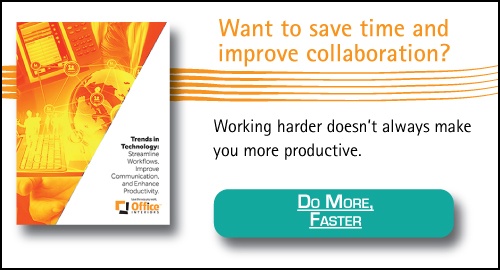Building strong communication within an organization is imperative to internal productivity and efficiency. A recent survey showed 68% of employees are not engaged in the workplace. With the threat of lower productivity and high turnover, employers need to find solutions — and fast.
A communication plan is one solution to improve internal engagement by supporting transparency of company news and information and strengthening employee-to-employee relationships. Below are a few strategies to tackle communication in the workplace and ensure it remains a long-term strategy yielding your business the best results.
Create a Communication Strategy
A communication strategy should be company-specific and act as a pillar that supports the internal culture of an organization. This makes data, research, and metrics a vital component of the development process. There are numerous qualitative ways to analyze your current communication plan to make lucrative adjustments.
Employee feedback is a significant resource that helps refine a plan and ensure it encompasses internal employee-based demands. Online tools, like digital surveys, or merely sitting down and meeting one-on-one, can make it easier to reach all levels of an organization for a full scope of how current internal communications affect their ability to perform.
Quantitative data, though it can be costly, is essential to fine-tune a communication strategy. Collect data from online resources or your current tools and use the results (both good and bad) to adjust or create your plan. This can also help narrow down which tools are best to support viable communication.
Determine which channel receives the most activity and is preferred by employees. Use this information to choose which communication channel is the best fit moving forward. Technology-based communication tools are constantly evolving, so remaining diligent with routine data collection helps to shape a strategy that results in continuous success.
Implement Communication Solutions
Once a strategy is put in place and tools have been narrowed down based on prospective effectiveness, the next step is implementation. A study conducted by Mckinsey and Company found communication efforts increase productivity by 20%-25%, with tech-driven tools and software as major culprits due to their ability to expand internal communication further than ever before.
When it comes time to implement a strategy, start at the source with an efficient human capital management software to propel positive communication habits internally with a platform that opens company-wide communication. This tool also allows employers to manage their workforce amid digital transformation through an agile software, a critical component as business operations evolve in the digital age.
With the availability of digital tools as well, like chat rooms and intranet social platforms, employees are better able to connect in real-time. With information readily available, productivity levels increase, and services to external customers ultimately improve. These tools match modern, fast-paced operations that have resulted from the growth of technology.
Newsletters and company-wide emails are no longer the most effective means of internal communication, with quick, succinct messaging taking precedent. Mobile technology is at the forefront as an essential resource, with many employers making mobile applications integration a top priority. Allowing information to be readily available on smartphones or laptops increases knowledge transfer and further supports efficient communication.
Tech-based tools may require extensive training to make them digestible for employees. Training in new professional communication efforts is essential, especially in the digital age. Take employee feedback into account to develop training that targets specific pain points. Employers should give ample feedback in return based on employee training results to provide a better sense of direction on areas of improvement.
There are more solutions to internal communication than just tech-based tools, with the working environment playing a significant role as well. Create an open or blended floor plan that allows employees to converse without barriers (e.g., cubicles, walls). This can help strengthen employee relationships and make it easier for communication across teams or departments.
Using solely tech-based solutions can limit employee engagement with peers, creating an ill-connected culture. Office ergonomics can play a critical role in communication success; a healthy, comfortable employee is more likely to be engaged and productive.
Set Standards for Regular Processes
To maintain and support a communication strategy, you need to have standards set to guarantee continuity. Set annual goals with quarterly reports as a checkpoint and benchmark. This ensures tasks related to the implemented communication strategy are being maintained and remain relevant.
Create a standard release timeline of communication strategy related updates to give employees a strong sense of company goals and vision and help them to remain up to date and connected.
Robust employer-to-employee connection helps improve company culture, and aids in employee engagement overall. It can also ensure continuous involvement in proper practices to reach the company’s communication goals. Utilize employee feedback as a real-time resource to better adapt your communication strategy to internal demands when it comes time to make changes as well.
Communication is a crucial component of a company’s internal culture and overall success. Making adjustments and finding solutions, whether tech-based or small changes to a work environment can go a long way and yield positive results. Employees will feel more engaged and connected to their work, improving retention, and allowing employers to retain talent.
Read about other emerging productivity tools and tactics in our guide, Trends in Technology.
Cory Porteous
Director of Marketing & Inbound Business Development
Office Interiors




